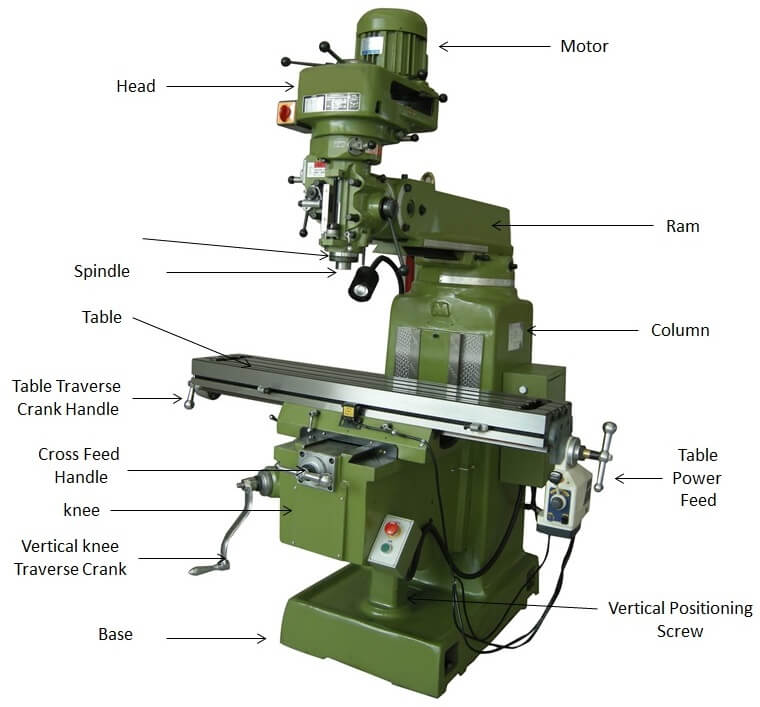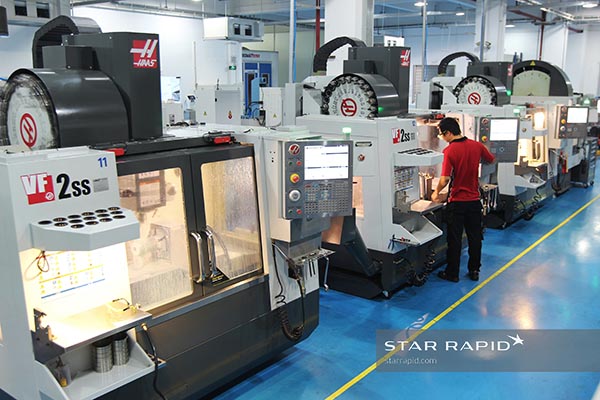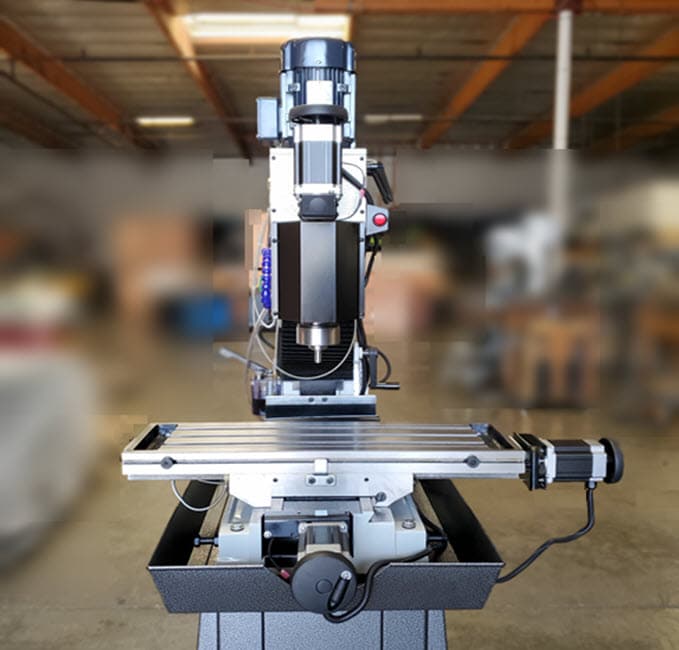Table of Contents
Manual CNC milling is a fascinating skill that requires precision, creativity, and patience. Whether you are a hobbyist or a professional machinist, mastering the art of manual CNC milling can help you create intricate designs and parts with ease.
If you are wondering whether you can manual CNC mill, the answer is yes! With the right tools, training, and practice, anyone can learn how to operate a manual CNC mill and unlock the endless possibilities of this versatile technique. In this article, we will explore the basics of manual CNC milling, the benefits of this process, and the best practices for mastering this skill.
Can You Manual CNC Mill?
If you are interested in CNC milling, you may have heard of manual CNC milling. Manual CNC milling is the process of milling using a machine that requires manual input, rather than a computer program. This type of milling can be a great way to learn about the process and develop your skills. In this article, we will explore the world of manual CNC milling and whether or not it is right for you.
What is Manual CNC Milling?
Manual CNC milling is a process of using a machine to remove material from a workpiece. The machine is operated by hand, and the operator controls the machine’s movement and the depth of the cut. The operator must have knowledge of the material being machined, the machine’s capabilities, and the tools being used.
Manual CNC milling machines are typically less expensive than computerized machines, making them a great option for hobbyists or those on a budget. They are also a great way to learn about the milling process and develop your skills.
The Benefits of Manual CNC Milling
One of the benefits of manual CNC milling is that it is a great way to learn about the milling process. By operating the machine manually, you will gain an understanding of how the machine works and how to control it. You will also learn about the different tools and materials used in milling.
Manual CNC milling machines are also less expensive than computerized machines. This makes them a great option for hobbyists or those on a budget. They are also portable, so you can take them with you wherever you go.
The Drawbacks of Manual CNC Milling
One of the drawbacks of manual CNC milling is that it can be time-consuming. Because the operator must control the machine manually, the process can take longer than computerized milling. This can be a disadvantage if you need to produce a large number of parts quickly.
Another drawback is that manual CNC milling machines require a skilled operator. The operator must have knowledge of the material being machined, the machine’s capabilities, and the tools being used. This can be a disadvantage if you are just starting out and do not have a lot of experience.
Manual CNC Milling vs. Computerized Milling
Manual CNC milling and computerized milling are two different processes. Computerized milling uses a computer program to control the machine, while manual CNC milling requires the operator to control the machine manually.
Computerized milling is faster and more precise than manual CNC milling. It is also easier to produce a large number of parts quickly using a computerized machine. However, computerized milling machines are more expensive than manual CNC milling machines.
Manual CNC milling is a great option for hobbyists or those on a budget. It is also a great way to learn about the milling process and develop your skills. However, it can be time-consuming and requires a skilled operator.
The Tools Used in Manual CNC Milling
Manual CNC milling machines use a variety of tools to remove material from the workpiece. Some of the most common tools include end mills, face mills, and drills.
End mills are used to remove material from the sides of the workpiece. They come in a variety of shapes and sizes, and can be used to create a variety of shapes.
Face mills are used to remove material from the top of the workpiece. They are typically larger than end mills, and are used to remove material quickly.
Drills are used to create holes in the workpiece. They come in a variety of sizes and shapes, and can be used to create both small and large holes.
The Materials Used in Manual CNC Milling
Manual CNC milling machines can be used to machine a variety of materials, including metals, plastics, and wood. Some of the most common materials used in manual CNC milling include aluminum, steel, brass, and copper.
Each material has its own unique properties, and requires a different approach to machining. It is important to have knowledge of the material being machined in order to produce high-quality parts.
The Cost of Manual CNC Milling Machines
Manual CNC milling machines are typically less expensive than computerized machines. They can range in price from a few hundred dollars to a few thousand dollars, depending on the size and capabilities of the machine.
It is important to consider the cost of the machine when deciding whether or not manual CNC milling is right for you. You should also consider the cost of the tools and materials required for machining.
The Future of Manual CNC Milling
Manual CNC milling will likely continue to be a popular option for hobbyists and those on a budget. While computerized milling machines are faster and more precise, manual CNC milling machines offer a unique learning experience and can be a great way to develop your skills.
As technology continues to evolve, it is possible that manual CNC milling machines will become more advanced and easier to use. However, it is also possible that they will become less common as computerized milling machines become more affordable.
Conclusion
Manual CNC milling is a great way to learn about the milling process and develop your skills. While it can be time-consuming and requires a skilled operator, it is a great option for hobbyists or those on a budget. If you are interested in manual CNC milling, be sure to research the different machines, tools, and materials available, and consider the cost of the machine and the tools required for machining.
Frequently Asked Questions
Here are some common questions about manual CNC milling.
Can you manual CNC mill?
Yes, it is possible to manually operate a CNC milling machine. However, it requires a great deal of skill and experience to do so effectively. Manual CNC milling involves using hand cranks or other manual controls to move the machine along the desired path. This is a time-consuming process that requires a great deal of patience and precision.
While manual CNC milling can be an effective way to produce small quantities of parts, it is not as efficient as using a computer to control the machine. CNC machines can operate much faster and more accurately than a human operator ever could. Additionally, they can run 24/7 without the need for breaks or rest, making them ideal for high-volume production.
What are the benefits of manual CNC milling?
Manual CNC milling can be beneficial in certain situations. For example, it can be a good option for small-scale production runs or for producing custom parts that require a high degree of precision. Additionally, manual CNC milling allows for greater control over the machining process, which can be useful for achieving specific results or for troubleshooting problems.
However, it is important to note that manual CNC milling is not a replacement for computer-controlled milling. CNC machines are designed to be faster, more accurate, and more efficient than manual machines. While manual CNC milling can be a useful tool in certain situations, it is not the best option for most manufacturing applications.
What skills are required for manual CNC milling?
To operate a CNC milling machine manually, you need a high level of skill and experience. You must be able to read and interpret technical drawings and specifications, understand the principles of machining, and have a good understanding of the materials you are working with. Additionally, you must have the physical dexterity and hand-eye coordination to operate the machine effectively.
Other important skills for manual CNC milling include problem-solving, critical thinking, and attention to detail. You must be able to identify and troubleshoot problems as they arise, and make adjustments to the machining process as needed to achieve the desired results.
What are some common applications for manual CNC milling?
Manual CNC milling is commonly used in a variety of manufacturing applications, including prototyping, custom parts fabrication, and small-scale production runs. It is also frequently used in the aerospace, automotive, and medical device industries, as well as in research and development.
Some specific examples of parts that may be produced using manual CNC milling include gears, shafts, brackets, housings, and other complex components. Manual CNC milling can be a useful tool for producing parts that are difficult or impossible to create using other methods, such as casting or forging.
How does manual CNC milling compare to other machining methods?
Manual CNC milling is just one of many machining methods available to manufacturers. Other common methods include turning, drilling, grinding, and EDM (electrical discharge machining). Each method has its own strengths and weaknesses, and is best suited for certain types of parts and materials.
Compared to other machining methods, manual CNC milling is typically slower and less efficient. However, it offers greater control over the machining process, which can be beneficial in certain situations. Additionally, manual CNC milling can be a good option for producing small quantities of parts or custom components that require a high degree of precision.
In conclusion, manual CNC milling is a valuable skill that every machinist should acquire. It not only helps to improve your precision and accuracy but also enhances your creativity and problem-solving abilities.
Learning how to manual CNC mill can seem daunting at first, but with dedication and practice, anyone can master the skill. Whether you are a beginner or an experienced machinist, there are always new techniques and tricks to learn.
So, if you are looking to expand your skillset and take on more challenging projects, consider learning how to manual CNC mill. With the right resources and a willingness to learn, you can become a proficient machinist and take your career to the next level.
Request a quote today!
[contact-form-7 id="1578" title="Contact form"]
Please compress the file into a ZIP or RAR file before uploading. Alternatively, send through your RFQ by email.
enquires@unitymanufacture.com





